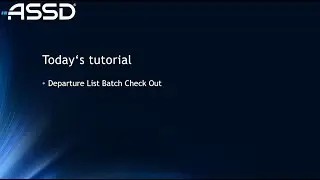Insulin and Glucagon | Physiology | Biology | FuseSchool
Insulin and Glucagon | Physiology | Biology | FuseSchool
In this lesson, you will learn about how your blood glucose level is regulated (or controlled) by two important hormones – insulin and glucagon, via a negative feedback system.
When you consume a meal that is high in carbohydrates, such as rice, pasta, and bread, this will cause your blood glucose level to increase. Carbohydrates are essentially long chains of repeating glucose monomer units, much like beads on a necklace.
During digestion, this is broken apart into glucose, which absorbed into our bloodstream. This increased blood glucose level causes a gland known as the pancreas to secrete a hormone called insulin. Remember that a gland secretes hormones which act on specific target organs.
In this case, the target organ is your liver, which is stimulated to convert glucose to glycogen.
Glycogen is basically long, multi-branched chains of glucose monomers, stored in liver and muscle cells. Insulin also causes your body cells to uptake (or take in) glucose. So this decreases your blood glucose level back to its optimal state.
When this system is faulty, this leads to a medical condition known as diabetes – if you want to learn more about diabetes, this will be addressed in another video. The same response also occurs when you consume foods and drinks high in sugar such as sweets, cakes, and fizzy drinks.
When your blood glucose level drops, such as when you are hungry, the pancreas secretes a hormone called glucagon. Like insulin, the target organ for glucagon is also the liver, though it stimulates the opposite process – the breakdown of glycogen into glucose. This increases your blood glucose level back to its optimal state.
To review, insulin and glucagon are two hormones released by the pancreas, which act on the liver to regulate our blood glucose level.
SUPPORT US ON PATREON
/ fuseschool
SUBSCRIBE to the FuseSchool YouTube channel for many more educational videos. Our teachers and animators come together to make fun & easy-to-understand videos in Chemistry, Biology, Physics, Maths & ICT.
VISIT us at www.fuseschool.org, where all of our videos are carefully organised into topics and specific orders, and to see what else we have on offer. Comment, like and share with other learners. You can both ask and answer questions, and teachers will get back to you.
These videos can be used in a flipped classroom model or as a revision aid.
Find all of our Chemistry videos here: • CHEMISTRY
Find all of our Biology videos here: • BIOLOGY
Find all of our Physics videos here: • PHYSICS
Find all of our Maths videos here: • MATHS
Instagram: / fuseschool
Facebook: / fuseschool
Twitter: / fuseschool
Access a deeper Learning Experience in the FuseSchool platform and app: www.fuseschool.org
Follow us: / fuseschool
Befriend us: / fuseschool
This is an Open Educational Resource. If you would like to use the video, please contact us: [email protected]
Watch video Insulin and Glucagon | Physiology | Biology | FuseSchool online, duration hours minute second in high quality that is uploaded to the channel FuseSchool - Global Education 24 April 2017. Share the link to the video on social media so that your subscribers and friends will also watch this video. This video clip has been viewed 572,345 times and liked it 4.5 thousand visitors.







